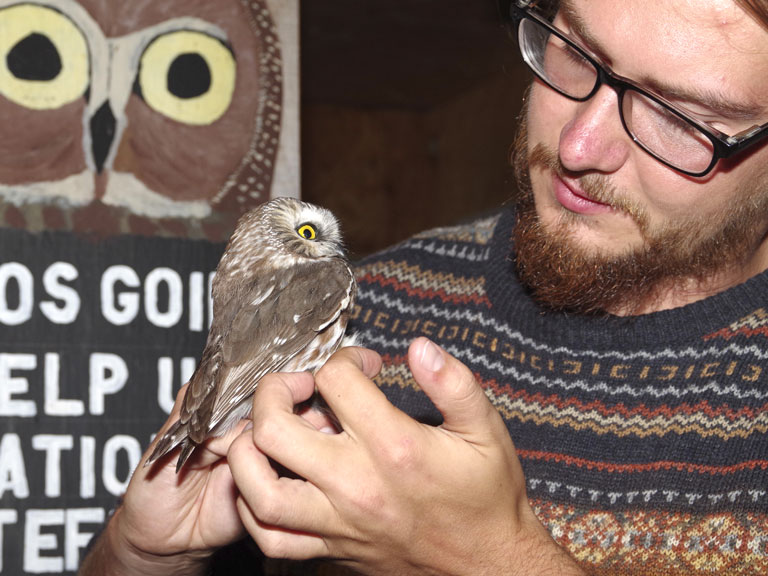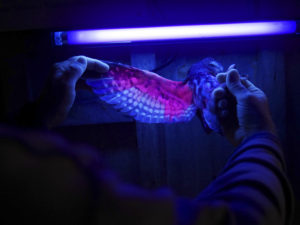County News
Catch and release

Bird banding program aims to monitor species’ health
The fall migration season is well under way, with thousands of songbirds passing across the County, resting and feeding all along the south shore before the arduous trip across the lake. But the woods are relatively silent. In the spring, the birds— males in particular—have one thing on their minds, and are not too shy about broadcasting their intent. In the fall, though, it’s all the business of finding enough food to keep them going on their continent- spanning migration, and they husband their energy for the trip.
At the Prince Edward Point Bird Observatory (PEPtBO), a group of dedicated volunteers set up nets to catch some of these migrant species, recording their age and physical condition and fastening a tiny numbered metal band to one of the bird’s legs before releasing them to continue on their journey. This is one of over 20 stations set up across Canada, and many more in the US and Mexico, with the goal of providing long-term data on the status of bird populations. When an already tagged bird is caught at one of these stations, that information is shared to everyone. Bird banding is carried out during both the spring and fall migration, with the fall banding providing an indication of how well the birds are breeding. “Ideally, in the fall you’ll have a lot of young birds coming through that were just hatched this summer,” says assistant birdbander Robyn Perkins. “So if we are not seeing all these young birds, we know there is a problem with productivity, of how many babies these birds made when they came up for the summer.”

The underside of an owl’s wing fluoresce in ultraviolet light. The pattern is an indicator of the bird’s age.
Perkins is a recent graduate in Environmental Science at Augustana University in Camrose, Alberta, and took part in the fall bird banding program there before migrating south—just like the birds—to the County to volunteer at PEPtBO. “The fun of songbird banding is you never know what you’ll pull out of the net,” she says. “At the start of the banding season you’ll get the resident population, that is, the species that bred right here. We’ll get the boreal birds and the tundra birds coming through.” Her time at PEPtBO gives her the opportunity to see birds that are not present in her Alberta home region. One such bird was the white-eyed vireo—in fact, that bird is rare enough here that the entire team of volunteers were giddy with excitement.
A second component of the fall banding involves sawwhet owls. These diminutive owls are relatively plentiful and briefly congregate in the County before tracking around the north shore of Lake Ontario and into the US. Chief bird-bander David Okines calls PEPtBO “the sawwhet capital of Canada.” In a typical fall season, they will band around 700 of these owls, capturing them when they are active during the night. It is unlikely that any of those owls will return to the County—they are too numerous and wide-ranging—but the health of the specimens provides a good indication of the conditions in their summer breeding areas. Visit peptbo.ca for more information about fall activities at the bird observatory.

Comments (0)